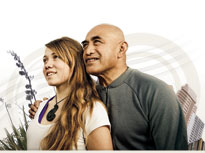Education for sustainability teaching and learning guide
Version date: 06 May 2015
Key changes: Version 3
Subject facilitator email:
[email protected]
What's new
What is education for sustainability about?
Education for sustainability (EfS) is about learning to think and act in ways that safeguard the well-being of people and the planet.
In EfS, students explore the relationship between people and the environment. They learn about the environmental, social, cultural, and economic aspects of sustainability. They learn to show leadership by example and to contribute to collective decisions that lead to actions for a sustainable future.
People can have very different views on sustainability. In EfS, students explore and evaluate different perspectives, rethink long-standing ideas, and consider alternative practices and directions. With the support of their teacher, they can take ownership of their learning and create new knowledge.
EfS is best taught collaboratively in conjunction with other subjects and supported by school and community policies and practices. Students then learn that no single area has a monopoly on solutions to complex issues. They also discover the power of partnerships, of working together.
Mō tātou te Taiao ko te Atawhai
Mō tātou te Taiao ko te Oranga
It is for us to care for the environment to ensure its well-being
In doing so we ensure our own well-being and that of future generations
http://efs.tki.org.nz/Toitū-te-Ao-Carving
EfS has its foundations in environmental education. See
Guidelines for Environmental Education in New Zealand Schools (Ministry of Education, 1999).
Education for sustainability curriculum guide content
Use the links below to access the sections of this guide. To navigate through the guide's web pages, select from the section and sub-section menu in the left-hand navigation.
Teaching and learning guides are produced in HTML. They have been designed to be viewed online.
To print individual pages, select the 'Print' button at the top right of each page.
To print the complete guide, select the ‘Download this guide in PDF format’ button. If your browser default is set to automatically open PDF downloads in a PDF reader, the entire guide will open and can then be printed. If not, the entire guide will download into your download folder, where you can then open the document and print. Please note, some guides may be more than 200 pages long.
Last updated November 24, 2023
TOP


